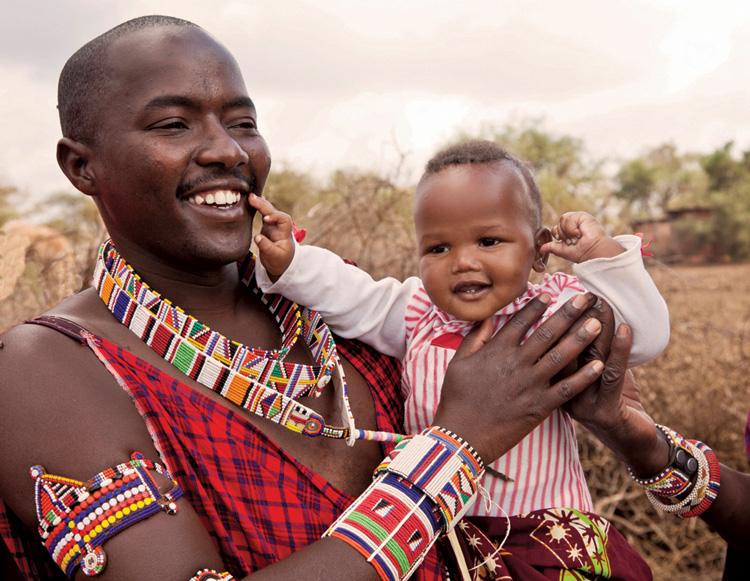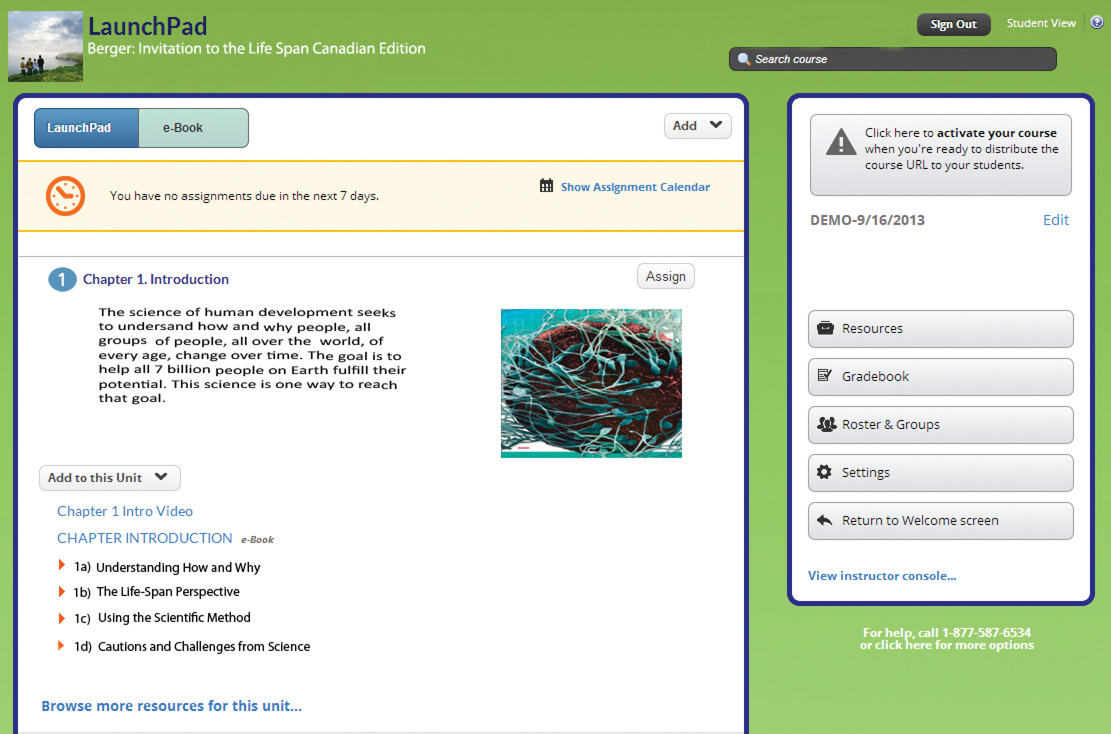1.2 Preface

In our daily lives, we experience many different situations, whether they are with our families and friends, peers from school, or the communities in which we live. We also witness others’ experiences, in person, on television, and in social media. During and after these events, we may try to figure out why a particular situation occurred, what impact it will have on those involved, and what will happen in the future.
As we try to make sense of our world, we create theories to better understand our circumstances and those of others. We take into consideration the characteristics of individuals—
We hope that this textbook will provide you with greater clarity on how we live, answer some questions you may have, and hopefully have you asking more! This textbook is just the beginning, an invitation to understand the complexities of your life, your family and friends’ lives, and the lives of all the other billions of humans alive now or who have lived.
Education occurs in hundreds of ways. Writing this book is one of our contributions; studying it is one of yours. We strove to make this text both challenging and accessible to every student. You deserve a book that respects your intellect and experiences, without making development seem dull or obscure.
Overall, we believe that a better world is possible because today’s students—
To learn more about the specifics of this text, including the material that is new to the Canadian edition, read on. Or simply turn to Chapter 1 and begin your study.
New to this Canadian Edition
One thing you’ll notice from the first page of this book is that this is a truly Canadian textbook. This book has been thoroughly revised so that it speaks to our students—
Chapter 1: The Science of Human Development
- Sudden infant death syndrome (SIDS) in Canada
- The effect of Canadians’ socioeconomic status on their development
- The multicultural context in Canada
xiii
Chapter 2: From Conception to Birth
- Giving birth in Canada
- Rates of fetal alcohol syndrome (FAS) in Canada
- Canada’s infant mortality rate
Chapter 3: The First Two Years: Body and Mind
- Rates of breastfeeding in Canada
- The effects of poverty on nutrition and brain development in Canada
- The effects of bilingual first language acquisition on language-
learning ability

Chapter 4: The First Two Years: Psychosocial Development
- Canadian research on the effect of the environment on genes
- Canadian studies on the link between parenting and a child’s temperament
- Attachment and Aboriginal views on family life
- Kinship care in Canada
- Research on ethnic minority fathers in Canada
Chapter 5: Early Childhood: Body and Mind
- Obesity in Canada
- Lead and Canadian federal laws
- Avoidable injuries of Canadian children
- Sabrina’s Law: Provincial legislation aimed at keeping children with serious allergies safe at school
- Learning two languages, bilingual children and language, and bilingual education
- Aboriginal Head Start program
Chapter 6: Early Childhood: Psychosocial Development
- Canadian children and media
- Canadian research on the link between physical aggression among toddlers and future aggressive behaviour
- Child maltreatment in Canada
- Kinship care and Jordan’s Principle
Chapter 7: Middle Childhood: Body and Mind
- Physical activity of Canadian children
- Education in Canada
- Aboriginal education in Canada
- Special education in Canada
Chapter 8: Middle Childhood: Psychosocial Development
- Canadian research on resilience
- Prevalence of various family structures in Canada
- Poverty among Aboriginal peoples
xiv
Chapter 9: Adolescence: Body and Mind
- Nutrition of Canadian adolescents
- Cyberbullying in Canada
- Dropout rates in Canada
- Innovative educational programs in Canada

Chapter 10: Adolescence: Psychosocial Development
- Ethnic identity in Canada
- Intergenerational conflict in Canada
- Depression in Canadian children
- Rates of suicide among Canadian teens
- Drug use and abuse among Canadian teens
Chapter 11: Emerging Adulthood: Body, Mind, and Social World
- Post-
secondary education in Canada - Employment instability in Canada
- Mixed-
union couples in Canada - Canadian cohabitation rates
- Rates of young Canadian adults living at home
Chapter 12: Adulthood: Body and Mind
- Infertility in Canada
- Physical activity levels in Canada
- Link between income inequality and life expectancy in Canada
Chapter 13: Adulthood: Psychosocial Development
- Marriage rates in Canada
- Rates of same-
sex marriage in Canada - Divorce in Canada
- Adoption in Canada
- The Canadian labour force
- Parental leave in Canada

Chapter 14: Late Adulthood: Body and Mind
- Levels of physical activity among elderly Canadians
- The prevalence of neurocognitive disorders (NCD) among Canadians
Chapter 15: Late Adulthood: Psychosocial Development
- Stratification by ethnicity in Canada, with a focus on Aboriginal peoples and immigrants
- Low income rates among Canada’s elderly
- Political activism among the elderly in Canada
- Caring for the frail elderly in Canada
Epilogue: Death and Dying
- Hospice care in Canada
- Canada’s right-
to- die debate
xv
Ongoing Features
While this book has been thoroughly updated and Canadianized, many characteristics of the first edition were acclaimed and have therefore been retained in this new edition.
Writing That Communicates the Excitement and Challenge of the Field
An overview of the science of human development should be lively, just as real people are. Each sentence conveys tone as well as content. Chapter-
Up-
Our mentors welcomed curiosity, creativity, and skepticism; as a result, we are both eager to read and analyze thousands of articles and books on everything from autism to zygosity. The recent explosion of research in neuroscience and genetics has challenged both of us, once again, first to understand and then to explain many complex findings and speculative leaps. Our students continue to ask questions and share their experiences, always providing new perspectives and concerns.
The best of the new concepts are integrated into the text, including hundreds of new references on topics such as the genetics of delinquency, infant nutrition, bipolar and autism spectrum disorders, high-
RESEARCH ON THE BRAIN
Every major section of the book includes a section on the brain, often enhanced with charts and photos to help students understand its inner workings. The following list highlights some of this material:
- The implication of low serotonin levels in SIDS
- The role of neurotransmitters and growth factors such as GDNF in depression
- PET scans of brains of a depressed and a non-
depressed person - Effect of the short allele of 5-
HTTLPR on stress reactions - Prenatal growth of the brain; illustrated
- Teratogenic effects on brain development; 78–
79 - Brain development in the first two years
- Measurements of brain function applied to evaluate Piaget’s sensorimotor intelligence
- Epigenetic effects on brain development
 Idyllic Two 8-
Idyllic Two 8-year- olds, each with a 6- year- old sister, are day- dreaming or exploring in a very old tree beside a lake in Denmark— what could be better? HENRIK WEIS/CULTURA/CORBIS - Brain developments that support social emotions
- The effect of stress on brain development
- Synchrony and brain maturation
- Attachment and brain development
- The effect of lead exposure on brain development
- Brain development in early childhood (prefrontal cortex, myelination, lateralization, the limbic system); illustrated
- The effects of physical exercise on the brain
 Bonded That fathers enjoy their sons is not surprising, but notice the infant’s hand reaching for Dad’s face. At this age, infants show their trust in adults by grabbing and reaching. Synchrony and attachment are mutual.BRITTA KASHOLM-
Bonded That fathers enjoy their sons is not surprising, but notice the infant’s hand reaching for Dad’s face. At this age, infants show their trust in adults by grabbing and reaching. Synchrony and attachment are mutual.BRITTA KASHOLM-TENGVE/GETTY IMAGES - Collaboration of cortical regions in selective attention
- Unusual brain patterns in children with bipolar disorder and ADHD
- Use of brain scans to identify neurological problems that make reading difficult
- Brain abnormality as a possible factor in bullying
- The role of the pituitary gland in hormone production
- Adolescent brain development; heightened arousal of reward areas of the brain
- Proportion of grey matter from childhood through adolescence
- Benefits of adolescent brain development
- The impact of sexual abuse on the brain
- Neurological factors as predictors of delinquency in adolescence
- The impact of alcohol on the adolescent brain
- Brain development and postformal thought
- The aging brain: Neurological changes in adulthood
- Fluid intelligence and overall brain health
- Complications in calculating adult IQ due to brain changes
- Brain changes due to experience and expertise
- Brain function and personality
- The aging brain: Neurological changes in late adulthood
- Brain-
shrinkage interference with multi- tasking in late adulthood - Skills practice and improvement of brain function in late adulthood
- Specific genes associated with Alzheimer’s disease (AD); scans of progress of AD
- Correlation between vascular neurocognitive disorder and the ApoE4 allele
- Repeated concussions as a precursor of neurocognitive disorder
- Expression of creativity and its impact on brain health
- Brain activity in response to disappointment: Differences between old, emotionally healthy individuals; old, depressed individuals; and young individuals
- Brain death as determining factor in declaring a person legally dead
An Interdisciplinary Approach
Cognizant of the interdisciplinary nature of human development, we reflect research in biology, sociology, education, anthropology, political science, and more—
xvii
Coverage of Diversity
Cross-
New research on family structures, immigrants, bilingualism, emerging adults, and ethnic differences in health are among the many topics that illustrate human diversity. Respect for human differences is evident throughout. You will note that examples and research findings from many parts of the world are included, not as add-

Student Support
This book was designed for today’s students. Each chapter begins with a brief reallife vignette to help students connect to the chapter content. Key terms appear in boldface type in the text; they are defined in the margins and again in a glossary at the end of the book. The outline on the first page of every chapter and the system of major and minor subheads facilitate the survey-
Each major section of a chapter closes with “Key Points,” allowing students to pause and reflect on what they have just read. Active learning is also stressed in “Observation Quizzes” that inspire readers to look more closely at photographs, tables, and graphs, as well as in “Especially for…” questions in the margins. Each “Especially for…” question is addressed to a specific population—
Critical thinking is encouraged throughout—
LEARNING OBJECTIVES
Much of what students learn from this course is a matter of attitude, approach, and perspective—

At the end of each chapter are more specific learning objectives (“What Have You Learned?”) that also connect to each major heading within the chapter but ask more specific questions about the chapter content. Suggestions and grading rubrics for these questions are available in the test bank that goes along with the book.
xviii
OPPOSING PERSPECTIVES
New to this edition are boxed features on controversial and exciting topics in development—
Supplements
As instructors, we know that supplements can make or break a class. Students are now media savvy and instructors use tools that did not exist when they were in university or college. Many supplements are available for both students and professors.
In particular, we both know how important good quality assessment materials are to students who use them to study—
Launchpad
A comprehensive web resource for teaching and learning development, LaunchPad combines rich media resources and an easy-

LEARNINGCURVE QUIZZING SYSTEM
The LearningCurve quizzing system is designed based on the latest findings from learning and memory research. It combines adaptive question selection, immediate and valuable feedback, and a game-
xix
Human Development Videos
In collaboration with dozens of instructors and researchers, Worth has developed an extensive archive of video clips. This collection covers the full range of the course, from classic experiments (like the Strange Situation and Piaget’s conservation tasks) to investigations of children’s play, adolescent risk taking, and the effects of Alzheimer’s disease. Instructors can assign these videos to students through LaunchPad or choose one of 50 popular video activities, which combine videos with short-
Instructor’s Resources
Now fully integrated with LaunchPad, this collection of resources, written by Richard O. Straub (University of Michigan, Dearborn), has been hailed as the richest collection of instructor’s resources in developmental psychology. The resources include learning objectives, springboard topics for discussion and debate, handouts for student projects, course planning suggestions, ideas for term projects, and a guide to audiovisual and online materials.
Interactive Presentation Slides
A new extraordinary series of “next-
Test Bank and Computerized Test Bank
The test bank, prepared by Jessica Herrick (Colorado Mesa University), Victoria Van Wie (Lone Star College), and Susan Chuang, includes at least 100 multiple-
The Diploma computerized test bank, available on a dual-
xx
The CD-
Thanks
We would like to thank the academic reviewers who have read this book in every edition and who have provided suggestions, criticisms, references, and encouragement. They have all made this a better book. We want to mention especially those who have reviewed this Canadian edition:
Sherry Beaumont, University of Northern British Columbia
Debashis Dutta, Renison University College and Conestoga College
Frank Elgar, McGill University
Wendy Ellis, King’s University College
Lana-
Antonia Henderson, Langara College
Jacqueline Kampman, Thompson Rivers University
Cheryl Kier, Athabasca University
Laura Loewen, Okanagan College
Michael MacDonald, Oakland University
Michael Mueller, University of Guelph
Nancy Ogden, Mount Royal University
Rick Owens, George Brown College
Carol Prechotko, Cambrian College of Applied Arts and Technology
Kim Roberts, Wilfrid Laurier University
William Roberts, Thompson Rivers University
Scott Ronis, University of New Brunswick
Nicholas Rule, University of Toronto
Sandra Wiebe, University of Alberta
We would also like to thank those dedicated and thoughtful instructors who met with us to discuss the challenges and rewards of teaching life span development.
Melanie Doyle, Dawson College
Susan Finch, Dawson College
Michael Mueller, University of Ontario Institute of Technology
Kim Roberts, Wilfrid Laurier University
Emily Schryer, University of Waterloo
Jan Schumacher, Georgian College
Saima Sheikh, Humber College
xxi
A Note from Susan
I would like to first thank my wonderful parents who were my constant supports, always encouraging me to do my best, and my family and friends who provided great photos for the textbook. Many thanks to Jessica Bayne for reaching out to me to Canadianize this textbook. Her leadership, patience, and understanding throughout this process have made this a great learning experience. I am very grateful to my friend and colleague, Robert Moreno (Syracuse University, New York), for providing insightful comments on all of the chapters. Many thanks to the editorial, production, and photo research people at First Folio Resource Group Inc. for their attention to detail and always being positive and encouraging throughout this process, especially Debbie Smith, Tom Dart, Janice Dyer, and Maria DeCambra. I would also like to thank Ed O’Connor, my developmental editor, and the rest of the staff at Worth Publishers who helped make this book a reality, including Christine Burak, Julia Jevmenova, Tracey Kuehn, Rosemary McCullough, Katherine Nurre, Catherine Michaelsen, Lauren Samuelson, Barbara Seixas, and Vicki Tomaselli. Finally, at the University of Guelph, I would particularly like to thank all my students, including Jessica Furtado, Jenny Glozman, Kevin De Leon, Andrea Patterson, and Diana Truong, for their tireless efforts on the textbook, test bank, and LearningCurve.

Susan S. Chuang
February 2014